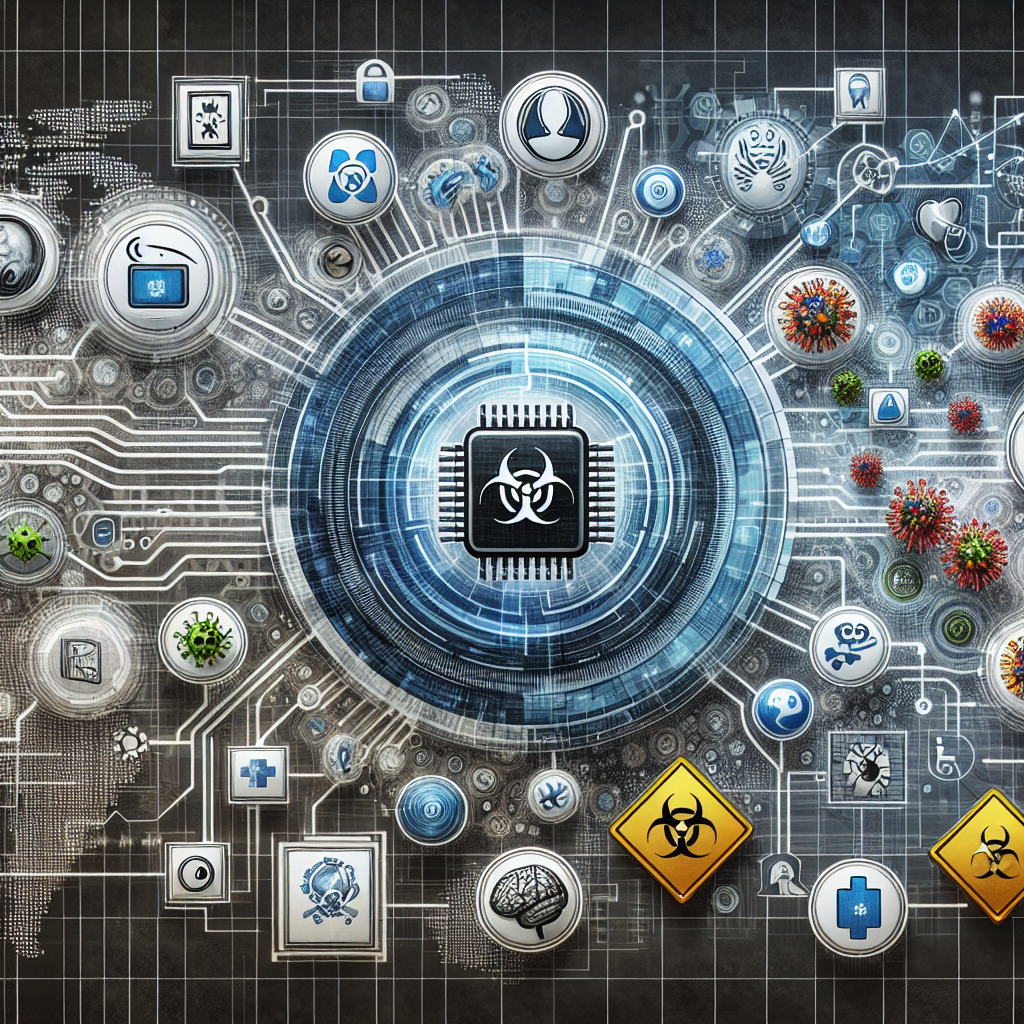Artificial Intelligence (AI) has revolutionized many industries, and public health surveillance is no exception. By leveraging AI technologies, public health officials are able to monitor disease outbreaks more effectively, identify trends, and take proactive measures to prevent the spread of diseases. In this article, we will explore how AI is being used in public health surveillance, its benefits, challenges, and the future of AI in monitoring disease outbreaks.
AI in Public Health Surveillance
Public health surveillance is the continuous, systematic collection, analysis, interpretation, and dissemination of health-related data to help plan, implement, and evaluate public health interventions. Traditionally, public health surveillance has relied on manual data collection and analysis, which can be time-consuming and error-prone. AI technologies, such as machine learning and natural language processing, are now being used to automate the process and provide real-time insights into disease outbreaks.
One of the key applications of AI in public health surveillance is disease detection. AI algorithms can analyze large volumes of data from various sources, such as social media, news reports, and electronic health records, to identify potential disease outbreaks. For example, researchers at the University of California, Los Angeles, have developed a machine learning algorithm that can predict influenza outbreaks up to seven weeks in advance by analyzing Twitter data.
Another important application of AI in public health surveillance is disease forecasting. By analyzing historical data on disease outbreaks, AI algorithms can predict the future spread of diseases and help public health officials plan for potential outbreaks. For example, researchers at the University of Texas at Austin have developed a machine learning model that can forecast dengue fever outbreaks in Brazil with high accuracy.
Benefits of AI in Public Health Surveillance
There are several benefits of using AI in public health surveillance. First and foremost, AI technologies can analyze large volumes of data much faster than humans, allowing public health officials to detect disease outbreaks in real time and take immediate action. This can help prevent the spread of diseases and save lives.
Second, AI algorithms can detect patterns and trends in data that may not be apparent to human analysts. By analyzing data from multiple sources, AI can identify correlations between different variables and provide insights into the factors that contribute to disease outbreaks. This can help public health officials target interventions more effectively and allocate resources where they are needed most.
Third, AI technologies can help public health officials prioritize their efforts by identifying high-risk populations and geographic areas. By analyzing demographic data, health records, and environmental factors, AI algorithms can identify vulnerable populations that may be at higher risk of disease outbreaks. This can help public health officials tailor their interventions to specific populations and prevent the spread of diseases more effectively.
Challenges of AI in Public Health Surveillance
While AI has the potential to revolutionize public health surveillance, there are also several challenges that need to be addressed. One of the main challenges is the quality of the data. AI algorithms rely on high-quality, accurate data to make reliable predictions, but data on disease outbreaks can be incomplete or inaccurate. Public health officials need to ensure that the data they use is reliable and up-to-date to avoid misleading results.
Another challenge is the lack of transparency in AI algorithms. Many AI algorithms are black boxes, meaning that it is difficult to understand how they arrive at their predictions. This can make it challenging for public health officials to trust the results and take appropriate action. Researchers and developers need to work on making AI algorithms more transparent and interpretable to build trust in their predictions.
Future of AI in Monitoring Disease Outbreaks
Despite the challenges, the future of AI in monitoring disease outbreaks looks promising. As AI technologies continue to advance, we can expect to see more sophisticated algorithms that can analyze data from multiple sources, predict disease outbreaks with higher accuracy, and provide real-time insights into public health trends. AI has the potential to revolutionize public health surveillance and help prevent the spread of diseases more effectively.
FAQs
Q: How can AI help in monitoring disease outbreaks?
A: AI can help in monitoring disease outbreaks by analyzing large volumes of data from various sources, detecting patterns and trends, forecasting future outbreaks, and identifying high-risk populations and geographic areas.
Q: What are the benefits of using AI in public health surveillance?
A: The benefits of using AI in public health surveillance include real-time detection of disease outbreaks, faster analysis of data, identification of correlations between different variables, prioritization of interventions, and targeting of high-risk populations.
Q: What are the challenges of using AI in public health surveillance?
A: The challenges of using AI in public health surveillance include the quality of the data, lack of transparency in AI algorithms, and the need for interpretability and trust in the results.
Q: What is the future of AI in monitoring disease outbreaks?
A: The future of AI in monitoring disease outbreaks looks promising, with more sophisticated algorithms that can analyze data from multiple sources, predict disease outbreaks with higher accuracy, and provide real-time insights into public health trends.
In conclusion, AI has the potential to revolutionize public health surveillance by providing real-time insights into disease outbreaks, identifying high-risk populations, and forecasting future outbreaks. While there are challenges that need to be addressed, the future of AI in monitoring disease outbreaks looks promising. By leveraging AI technologies, public health officials can take proactive measures to prevent the spread of diseases and protect public health.

